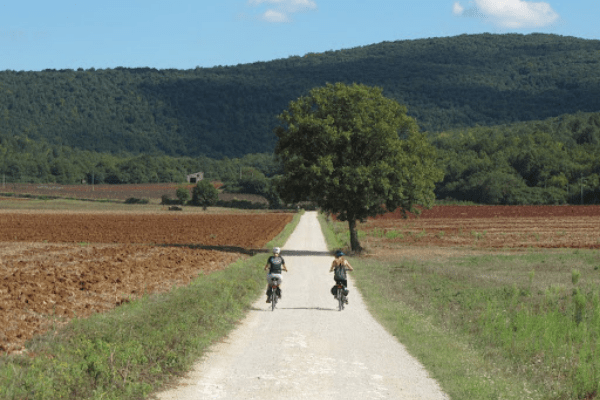The Francigena is an ancient pilgrimage route 1800 kilometers long that connects Canterbury to Rome, tomb of the apostles Peter and Paul and a point of reference for Christianity.
In the Middle Ages it was traveled not only by pilgrims but also by traders and armies. Due to wars and natural disasters that swept through the area, there was no single route for the Via Francigena, but many variations exist.
The oldest and most historical testimony to the existence of this route is that of Sigeric, archbishop of Canterbury, who traveled along the Francigena in 990 AD to receive the bishop's mantle from Pope John XV. The route divided into 79 stages by Sigeric, in his diary, was adopted by the Council of Europe as the official itinerary of the Camino to Rome. The document is still kept today at the British Library in London.
The Italian stretch winds along dirt paths and secondary roads and it is very useful to study the route and equip yourself with guides and routes.
The route can be divided into several stages.
Starting from Fidenza, you can continue to Medesano and finish the first 35km stage in Fornovo Taro.
The second 37 km stage will start from Fornovo, reaching Ghiare where you take a steep uphill road on the left which after 13 km of hairpin bends leads to Berceto.
The third stage takes into consideration Berceto to climb to the Cisa Pass and then descend towards Pontremoli and continue towards Sarzana. From here you can travel the 77 km of the fourth stage which takes into consideration Sarzana, Luni, Massa and Pietrasanta, Camaiore and ends in Lucca.
Leaving Lucca, on a flat road to Capannori and Altopascio from which you take a dirt road that leads to the ancient paved Roman road up to Galen. We will then continue to Ponte a Cappiano and Fucecchio, in a tree-lined avenue that leads up to the uphill road to San Miniato. The road descends gently onto the plain along sunflower fields up to Castel Fiorentino and you will arrive in Gambassi Terme.
You will then cycle in the Chianti hills towards the sixth stage, with continuous ups and downs that will lead you first to San Giminiano then, along stretches of dirt road of incredible beauty, to Colle Val D'Elsa. Take the Cassia which leads to Monteriggiori, with its typical medieval castle and continue to Siena.
The seventh stage starts from the city of the Palio and continues for a long stretch on the plain until the climb towards Torrenieri and after 10 km to San Quirico d'Orcia. Continuing along the dirt road up to Bagno Vignoni you can admire the thermal water pool in the main square. We will continue on the Cassia passing Gallina and Radicofani along a road that rises to 830 m where the Radicofani tower is perched from which you can see the Val d'Orcia and the Paglia valley.
In the eighth stage you cross the dirt road of the old Cassia which will lead to Bolsena, the city from where the ninth stage will start which will touch Montefiascone, Viterbo and Capranica.
The tenth stage continues on the Cassia towards Sutri, a medieval village with its historic center perched on a tuff spur. We will then deviate from Cassia to Trevignano on the shores of Lake Bracciano and then continue to climb up to Campagnano and after a short while descend towards Formello until arriving at La Storta.
In the last stage we will proceed along Via della Trionfale following the signs for the centre, until we go up to reach the Monte Mario viewpoint which overlooks all of Rome. The wonderful view of the Eternal City will repay every effort and every kilometer made along the way!

